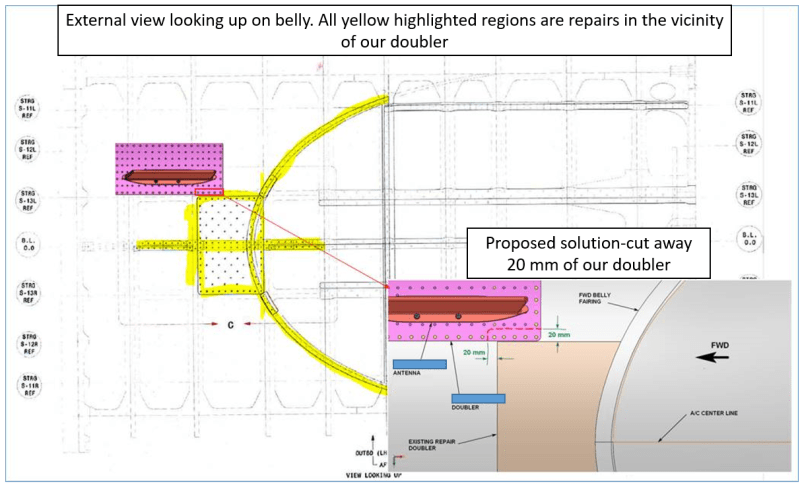I'm not saying it is the only viable option, but it is the one I would want to move forward with if it were me. Since this is an STC, I am assuming the STC Holder / ODA / a DER is involved in the approval process. I would ensure they are on board with everything.
There is a study of skin stress effects due to doubler proximity in AFRL-VA-WP-TR-2000-3030, Appendix E. However, these doublers are not just in proximity, they are butted up against one another. Even if the stresses are low, there are eccentric bending stresses in the skin primarily near the doubler outer rows. Having the doubler edges like that will create complex stress details in the skin which will be hard to predict. It is a poor stress riser detail and also poor from a damage tolerance standpoint. I'm not sure why they would not be encompassed together if given the opportunity
Also, since it is an STC, you need to re-evaluate the static substantiation and DTA for the STC in general, since this aircraft no doubt deviates from the intended STC drawing installation. So it's not as if your analysis will be any more complex. If you combine them it should be simpler actually.
Are you treating this as a repair or as a modification to the STC? That is, will this configuration be included in the MDL etc, or is it being given a repair approval? It sounds to me like this was found during installation of the STC. If that is the case, it should be considered a modification, which means DTE (if required) needs to be completed before flying.
Keep em' Flying
//Fight Corrosion!

